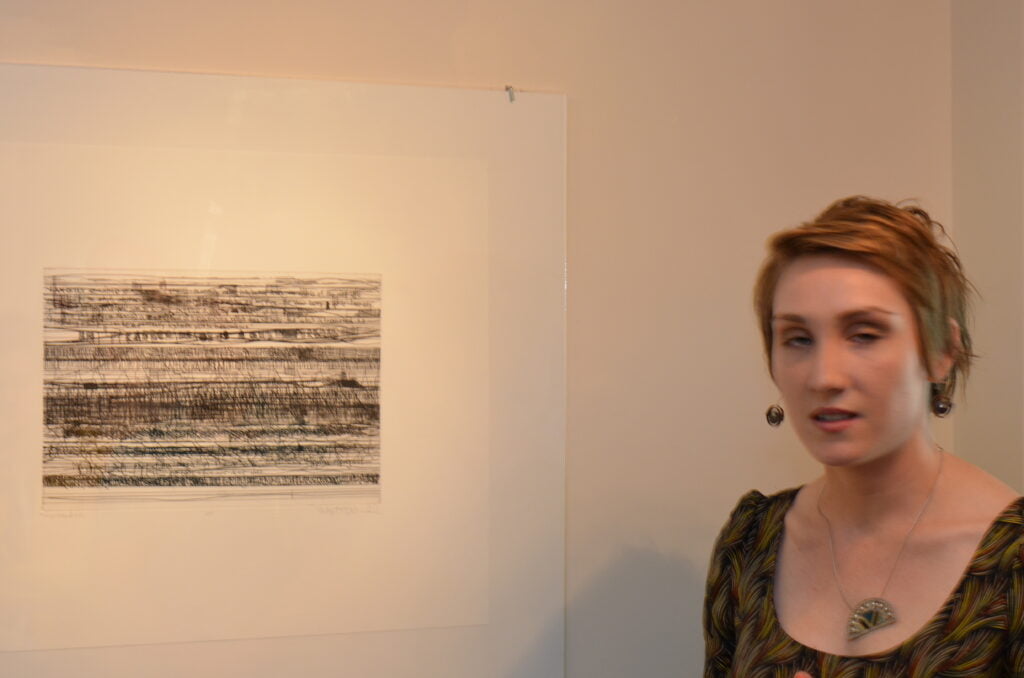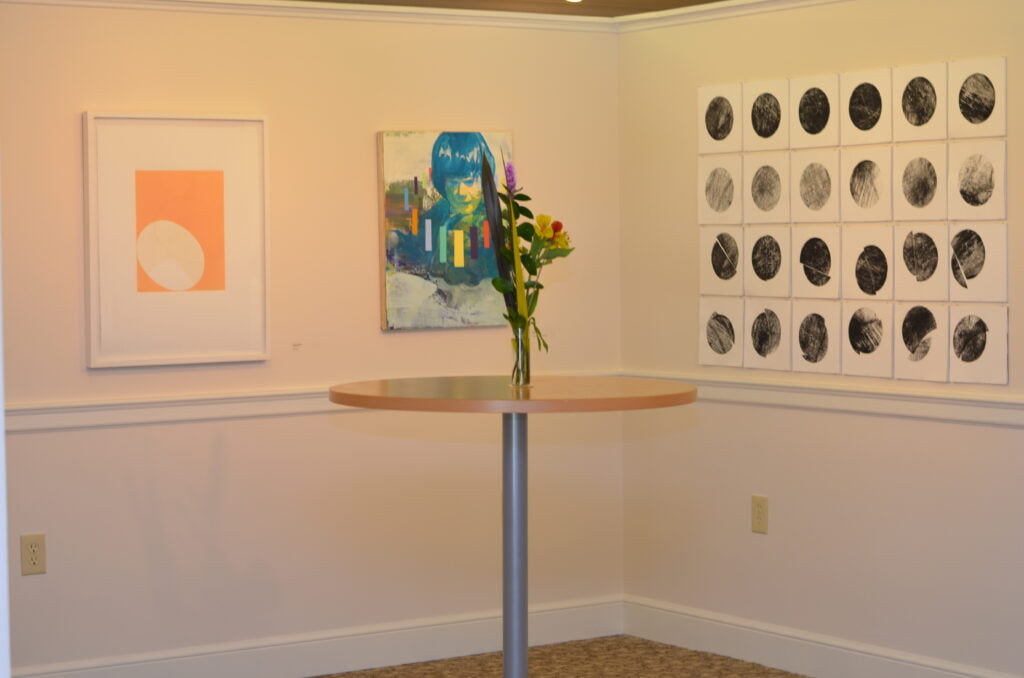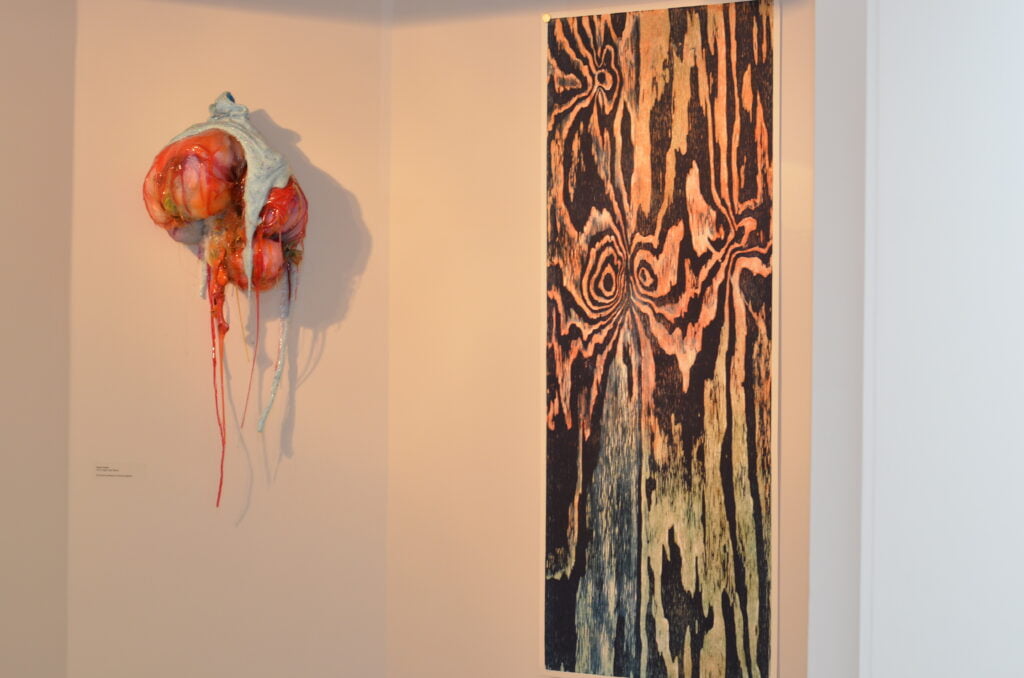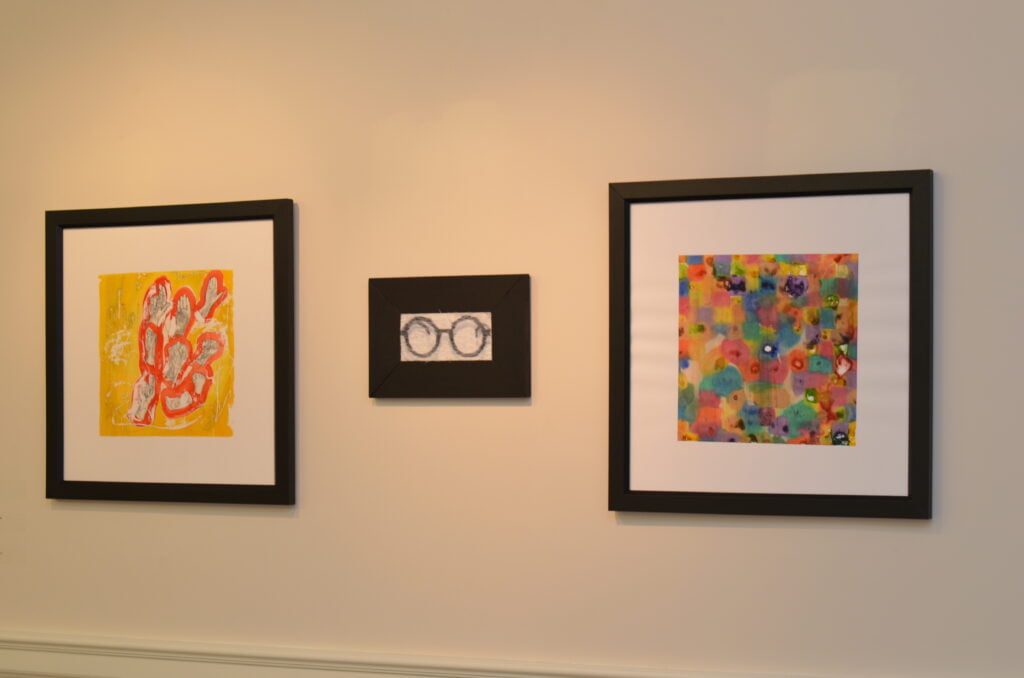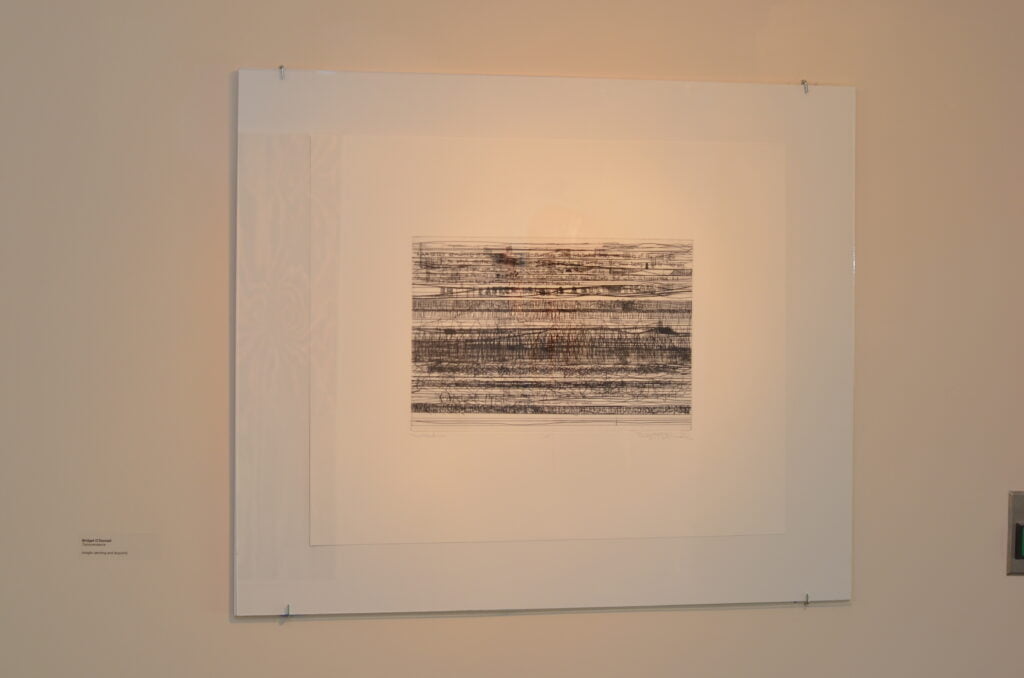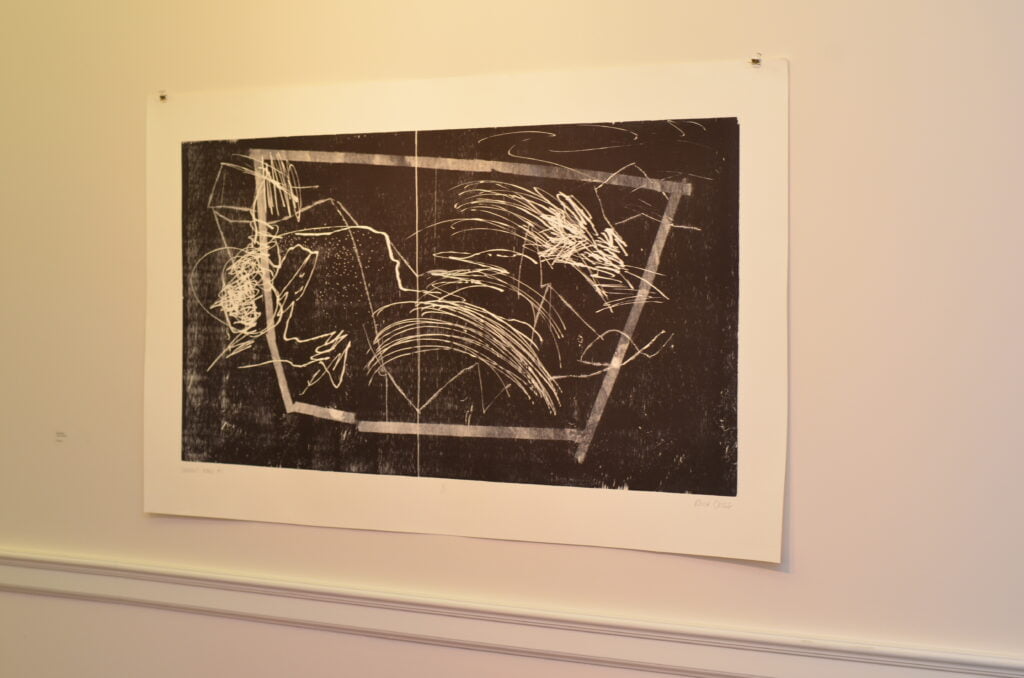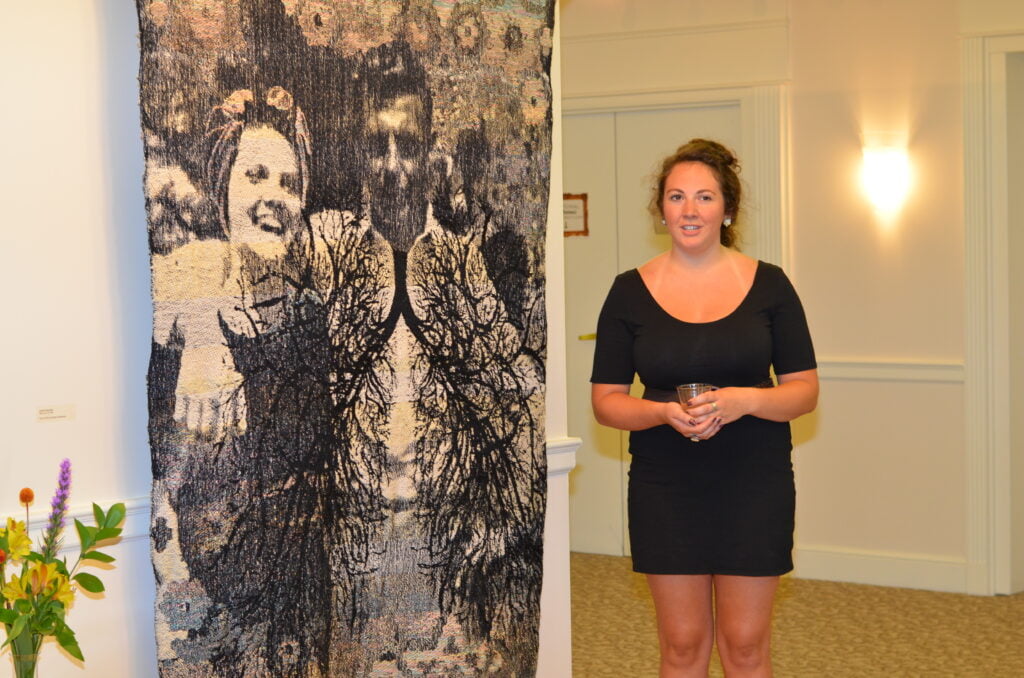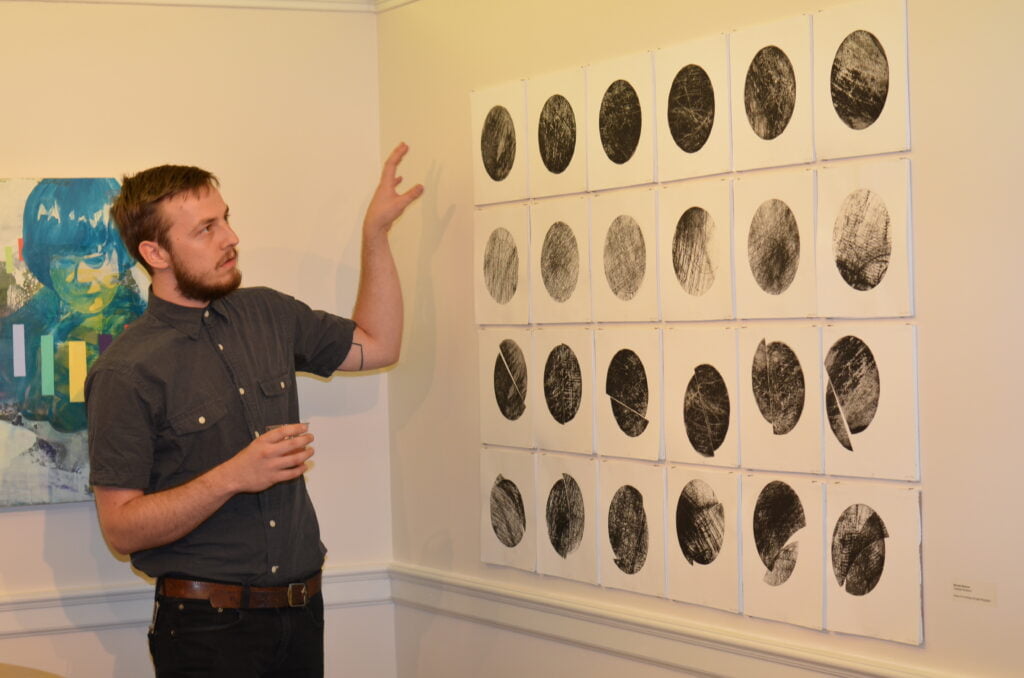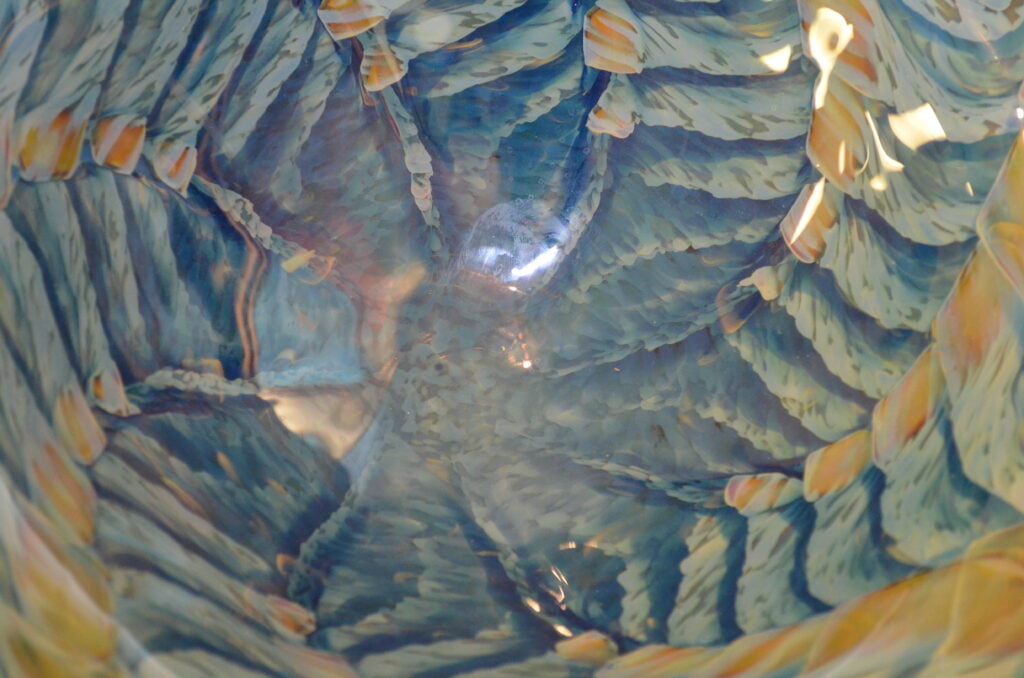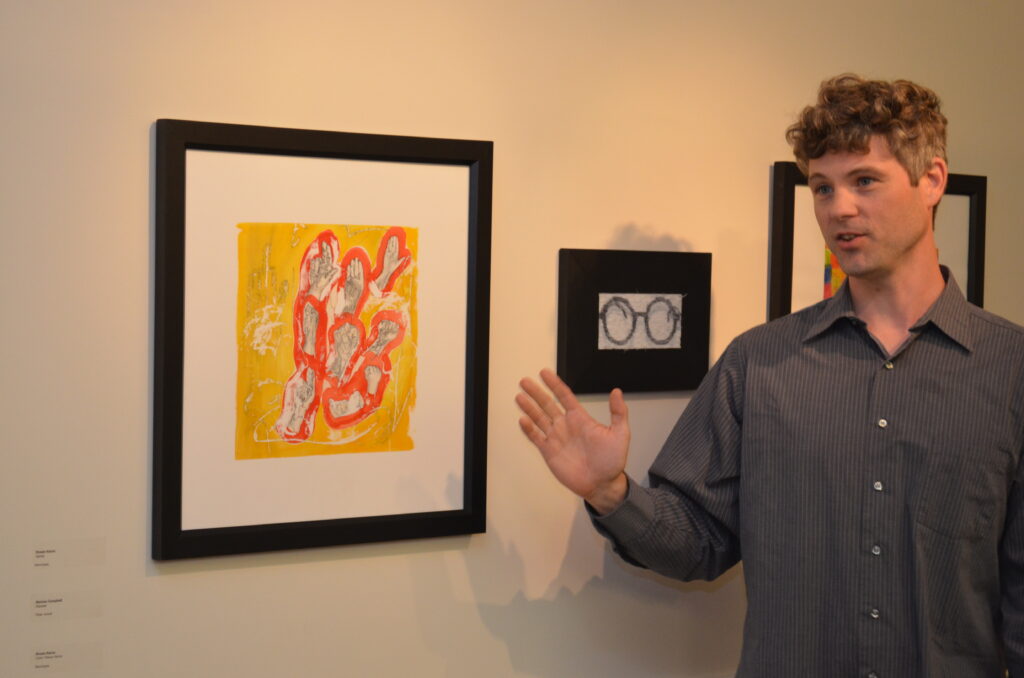

Past Exhibit
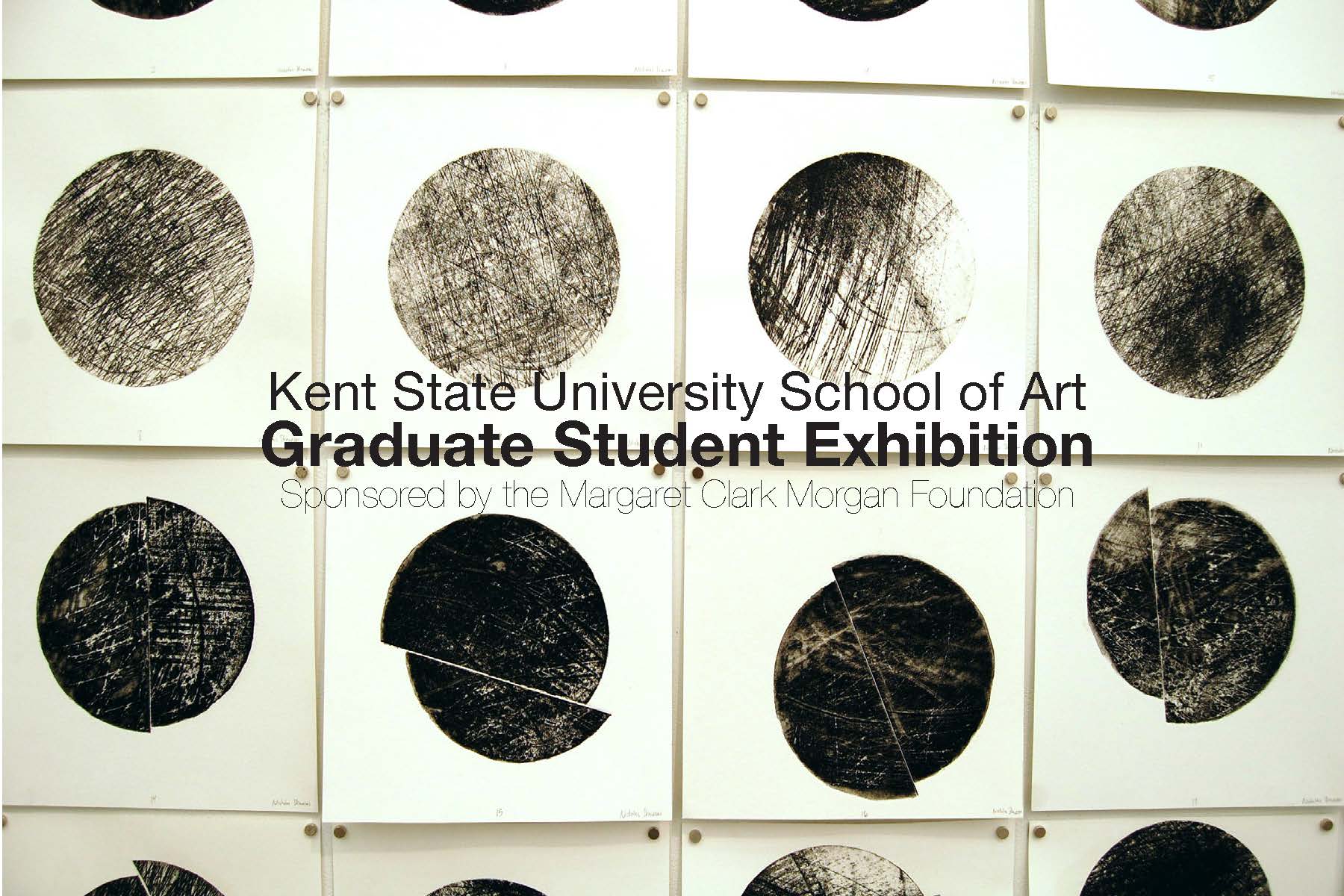
Kent State University School of Art
Peg's Gallery
June 25, 2012 — October 20, 2012
About the Artists
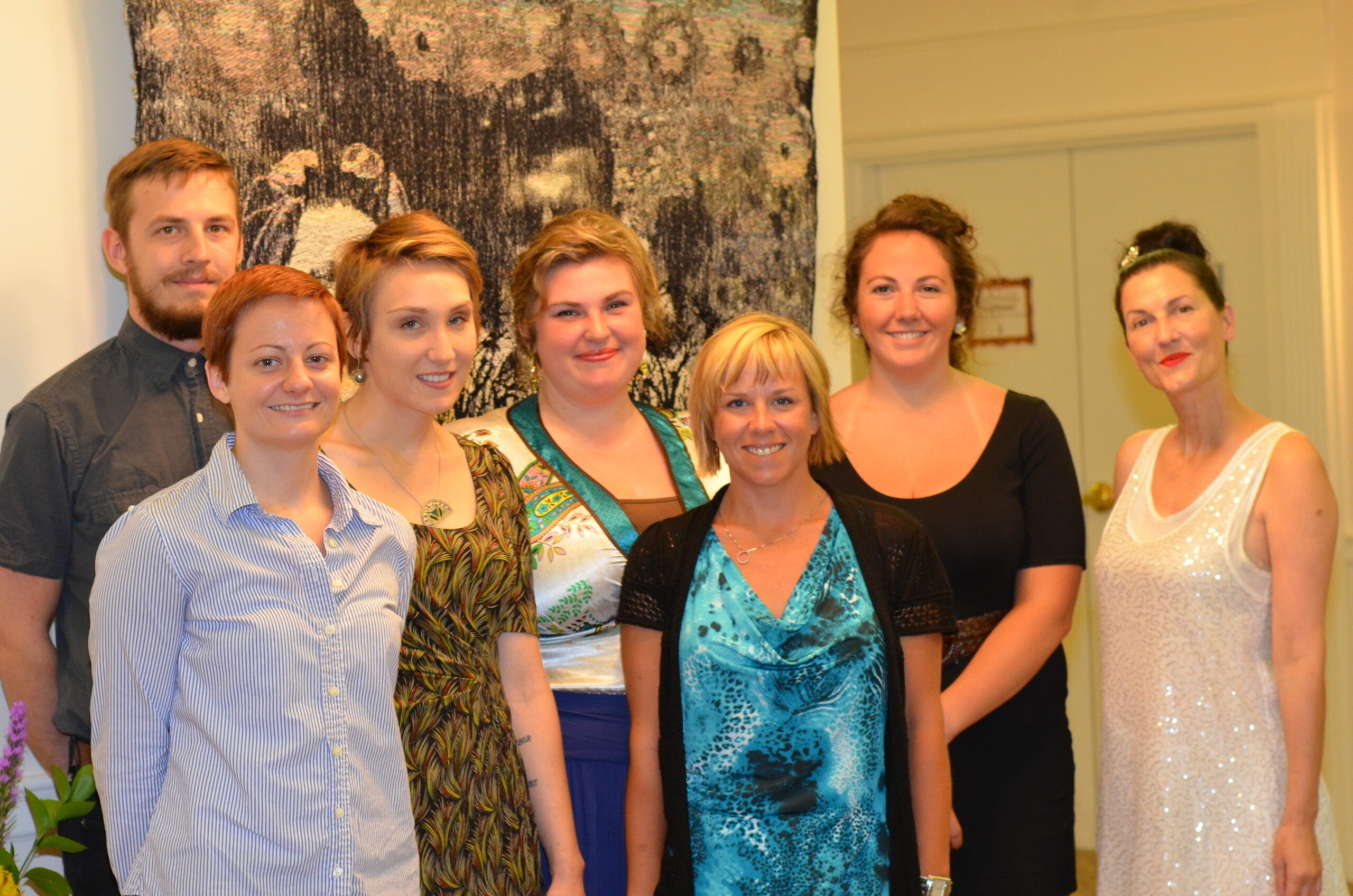
Joanne Arnett
Liz
Linen and copper wire
Joanne Arnett made the transition from commercial to fine art after working as a portrait photographer. She breaks apart the materials used in traditional photography, the paper fibers and metals used in light sensitive emulsions, and reassembles them using digital technology to create flexible monuments of her subjects. This portrait of the artist’s mother is constructed using linen thread and copper wire. The image will become more visible as the copper oxidizes and darkens, a slowed down version of the darkroom process. The presence of the face will become more in focus and stronger over time, defying the natural order of things.
Melissa Campbell
Glasses
Fiber and wood
My artwork studies the relationships between what is known and understood and what is spiritual and lives in the world of faith and intuition. By creating pieces that have both optically dynamic components and disrupted and fading elements, I work to explore the shift from activity to repose—a shift that reflects the movement from active mental processing of facts to resting in a place of peace or faith. Through painting, building up of surfaces, deconstructing and reconstructing patterns, I am studying the shift that occurs when the mind moves from the frenetic activity of confusion and questioning to acceptance, and calm.
The image in Glasses was created out of 350 layers of identically digitally printed layers of fabric. Stacking them and viewing them from the side through the frayed edges is both deconstructing the image and making it visible. The large black frame serves as a way of containing the hundreds of layers of frayed fabric and as an anchor through which the art is on view in the same way that the glasses frame our view when worn.
Sarah Jane
Untitled
Graphite and colored pencil on paper
Sarah Jane grew up in Stow, Ohio. During her undergraduate study at Miami University she studied painting, drawing, and eastern philosophy. Throughout her last year of graduate study at Kent State University she became interested in incorporating more eastern-derived concepts such as impermanence, ambiguity, and the slippery nature of time and experience into her artwork. She records videos, then selects frames from those videos to add, layer by layer, into the drawings. This provides a more transient, mysterious composition from which she makes intuitive decisions to playfully and carefully bring the drawing to a dynamic visual conclusion. She anticipates completing her Master of Fine Arts degree program in December of 2012, and hopes to continue teaching drawing classes at the college level and making artwork.
Shawn Kerns
Hands and Color Theory
Monotypes
My art uses a distinctively multilayered commentary using the mismatched combination of style, form and content to flaunt the impact on culture. The process of the translation act, that is linguistic, socio-cultural, and historical and what is lost in between as a result of social interactions is explored in my work. The balancing acts between the visions of reality, particularly the issues concerning the immediate conditions of life or individualized narratives that summon popular culture. I principally employ videos or theatrical performances to convey the ramifications of my reality.
Bridget O’Donnell
Transcendence
Intaglio
Bridget O’Donnell comes from Iowa and Minnesota. She studied fine art photography and rhetoric and composition at Creighton University in Omaha, Nebraska, and will complete her MFA in printmaking at Kent State University in December of 2012. With an emphasis on line and language, she uses the processes of intaglio to reveal a personal account shaped by redaction and the etching process. Her work has been exhibited at the International Print Center, New York, and the Center for Contemporary Printmaking, and is featured in the recently published book 1000 Artists’ Books.
Jeff Pasek
Playgrounds Past
Acrylic on canvas
In May I completed my first semester as a painting grad at KSU. My undergraduate degree is in philosophy, and previous to joining KSU’s grad program I worked for 9 years as a graphic designer. In my work, I allow the process of painting to suggest figures/faces that I find meaningful and worth pulling forward. I strive to find a balance between paint being paint and simultaneously suggesting some kind of presence.
In this particular work, I found and developed a figure that for me speaks to the awkwardness and uncertainty of childhood, particularly in the search for a self that can exist and find comfort in the difficult social environments of elementary school
Nicole Schneider
Parameters #1
Relief print
In my most recent work I implement sets of parameters to generate forms and dictate the placement of these forms within the composition. The parameters give me boundaries to work within but are still open-ended enough to allow for exploration, play, and the incidental properties of printmaking to enter the work. Oppositional elements play a large role in my work both conceptually and in the physical forms of the compositions. In Parameters #1, I am exploring the sense of movement and tension created by confining an oval within a rectangle. The oval appears to want to jump off the page, but it is confined to the boundaries of the rectangle.
Nicholas Skowron
Contained Vibrations I
Series of 24 etchings and paper lithographs
Nicholas Skowron was born in Youngstown, Ohio. He studied art and architecture at Kent State University from 2007 to 2011 and recently began his graduate studies in printmaking. His work uses the processes of printmaking to explore containment and visual boundaries with an emphasis on geometry and space. Contained Vibrations I is a twenty-four image series that explores what happens when an image’s boundary is violated, becoming two separated pieces from the same source.
Pamela Testa
Untitled
Woodcut
Pam Testa works to explore the patterns found in nature, and particularly, in this piece, woodgrain. She carefully chooses wood with intriguing grain patterns where she can see something hidden, such as a landscape, or in this case, an owl. She reveals her vision by cutting away parts of the grain and selectively inking the block during the printing process.
Shawn Watrous
Are You Watching?
Oil, acrylic and graphite on panel
In his essay Notes of a Painter, Henri Matisse wrote, “whether we want to or not, we belong to our time and we share in its opinions, its feelings, even its delusions.” I think it’s important when I consider what it is I am painting about, to put into context this filter, (as imposed on me by the time and place in which I am living) through which I experience this state of being. There are, however, experiences innate to the human condition, regardless of time or place. Unanswerable questions about the what’s and why’s of existence. I am interested in exploring these aspects of existence within the confines of the nowness that inevitably binds us. So there is a juxtaposition inherent in my work; a layering of marks referencing the language of abstraction and referential images codified in a personal symbolism. I think Michel Foucault eloquently expressed the nature of our contemporary experience when he wrote: ”We are in the epoch of simultaneity: we are in the epoch of juxtaposition, the epoch of the near and far, of the side-by-side, of the dispersed. We are at a moment. I believe, when our experience of the world is less that of a long life developing through time than that of a network that connects points and intersects with its own skein.”


